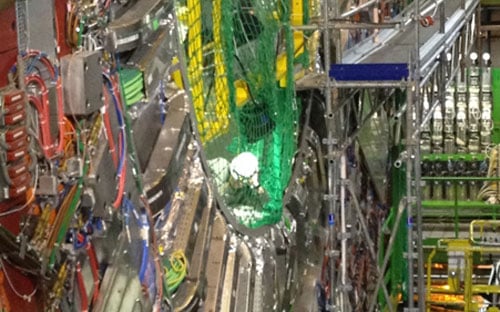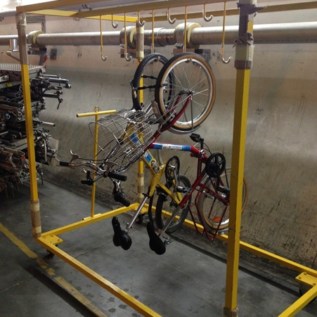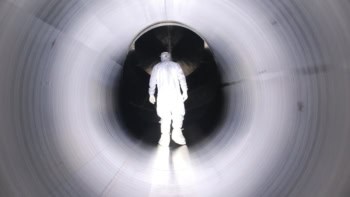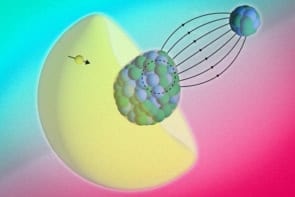
By Michael Bishop in CERN, Geneva
As CERN ramps up its preparations for “Run 2” of the Large Hadron Collider (LHC) at the start of 2015, many are wondering where the next big discovery will come from and whether it will emulate the success, and popularity, of the discovery of the Higgs boson in 2012.
There appears to be no hangover from that landmark event and a genuine excitement among the scientists at CERN, which I witnessed first-hand earlier this week during a two-day tour of CERN’s facilities organized by the UK’s Science and Technology Facilities Council (STFC).
Many of the UK-based scientists that I spoke to during the tour showed a remarkable enthusiasm for the experiments they were working on and confessed to expecting similar, if not bigger, discoveries when the particle collider starts smashing protons together at higher energies.
Engineers were busy at work on CERN’s four main experiments – LHCb, CMS, ATLAS and ALICE – that we were shown during the tour, as well in the 27 km-long tunnel, where workers zipped by on bicycles, carrying their tools in a trailer behind them, to upgrade specific parts of the beamline.

To see an engineer casually lying down in the centre of the 12,500-tonne CMS detector, where particles usually collide at almost the speed of light, was a very surreal experience, and gave a good indication of the sheer size and complexity of the instrument.
During a brief talk, John Ellis, who is Clerk Maxwell Professor of Theoretical Physics at Kings College London, highlighted the desire to find out more about the Higgs boson when the LHC restarts, as well going beyond the Standard Model to find new particles and also provide the first direct evidence of supersymmetry – a theory with which he has become synonymous.
He cautioned, however, that if no evidence of supersymmetry is found by the LHC before the end of 2015, then theorists may have to ditch the idea and start postulating once more.
Whether the next big discovery comes from one of the four main detectors, or indeed from the multitude of new experiments that will be up running when the LHC is switched back on, one thing is certain: the world will be watching and listening intently.
• For more on the discovery of the Higgs boson, check out recent Physics World features by Michael Riordan and Tommaso Dorigo.



